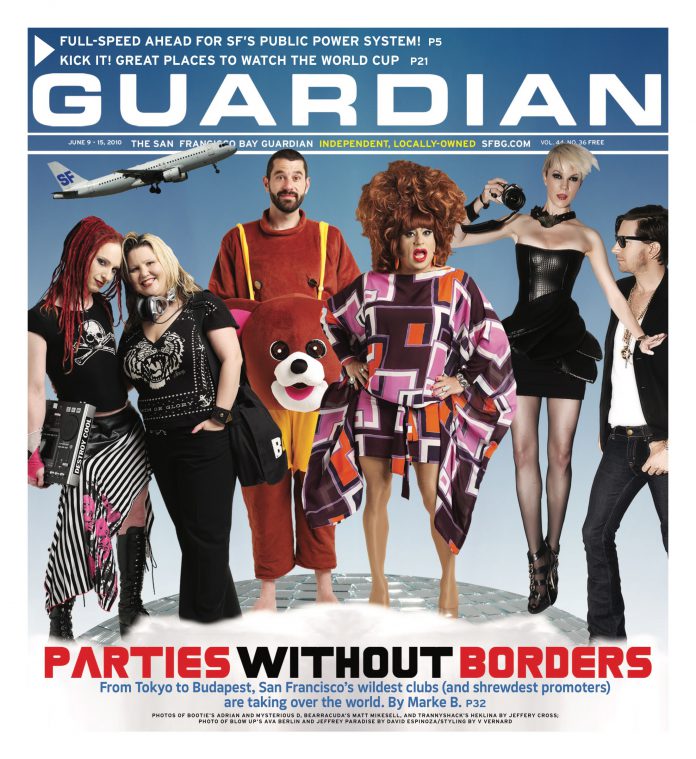By Tiny
OPINION Steel gates, steeds with silver spurs, lush red carpet lining the streets, uniformed officers guarding velvet-roped grand entrances to fancy costume balls while commoners are arrested if they so much as stop to rest on a nearby sidewalk. Sounds like the days of feudal England, or Marie Antoinette’s Paris. Guess again — its San Francisco, circa 2010.
In the wake of the proposed sit-lie law, which would make it illegal for poor people to sit or lie on any public sidewalk or street, the San Francisco is increasingly giving public streets and sidewalks away to large corporate festivals where rich, mostly white people stumble around with open containers, drunk and disorderly.
Since last month’s expanding Bay to Breakers "race," at which drunk, oddly dressed white people sat on curbs, stumbled into doorways, toppled onto the streets, and partied with entitled impunity as only people with race and class privilege can in this country, I have felt uneasy. This so-called run, supported by large corporations, has increased its land grab of several blocks of city streets, causing increased traffic, pollution, and blocked arteries for pedestrians, cyclists, and cars — all so that white people can party in undisturbed inebriation all across the city.
And if you think it was just a benign day of public drunkenness, think again. Several of my friends of color who made the mistake of being outside on race day were subjected to an onslaught of hate speech from some very threatening gang members (from the INGCHARLESSCHWABSTANFORD Gang. "You think this is Arizona?" "Are you here to be a valet?" "Go Back to Mexico."
I was riding my bicycle a week later only to be stopped on my route up Van Ness Street because of the two-day preparation, and then almost 24-hour exclusive usage of McAllister and Van Ness streets for the Black and White Ball. Again: a state-sanctioned, corporate-and-private-philanthro-pimped event for rich white people to get drunk and party on city streets.
Why is it that white people in a corporate-sanctioned party are seen as more safe or civilized than the rest of us — and how do houseless people, poor people, and people of color get criminalized in our own communities for the sole act of convening, standing, talking, or being?
It’s important to note that the rhetoric and propaganda in support of sit-lie has gone so far as to cite the struggle of disabled people to get by sidewalks "cluttered" with houseless people or businesses having their customers scared away by houseless folks convening. Yet the plethora of drunk people lying on sidewalks after Bay to Breakers are not seen as an obstacle to safety.
Tiny, a.k.a Lisa Gray-Garcia, is editor of POOR Magazine.

